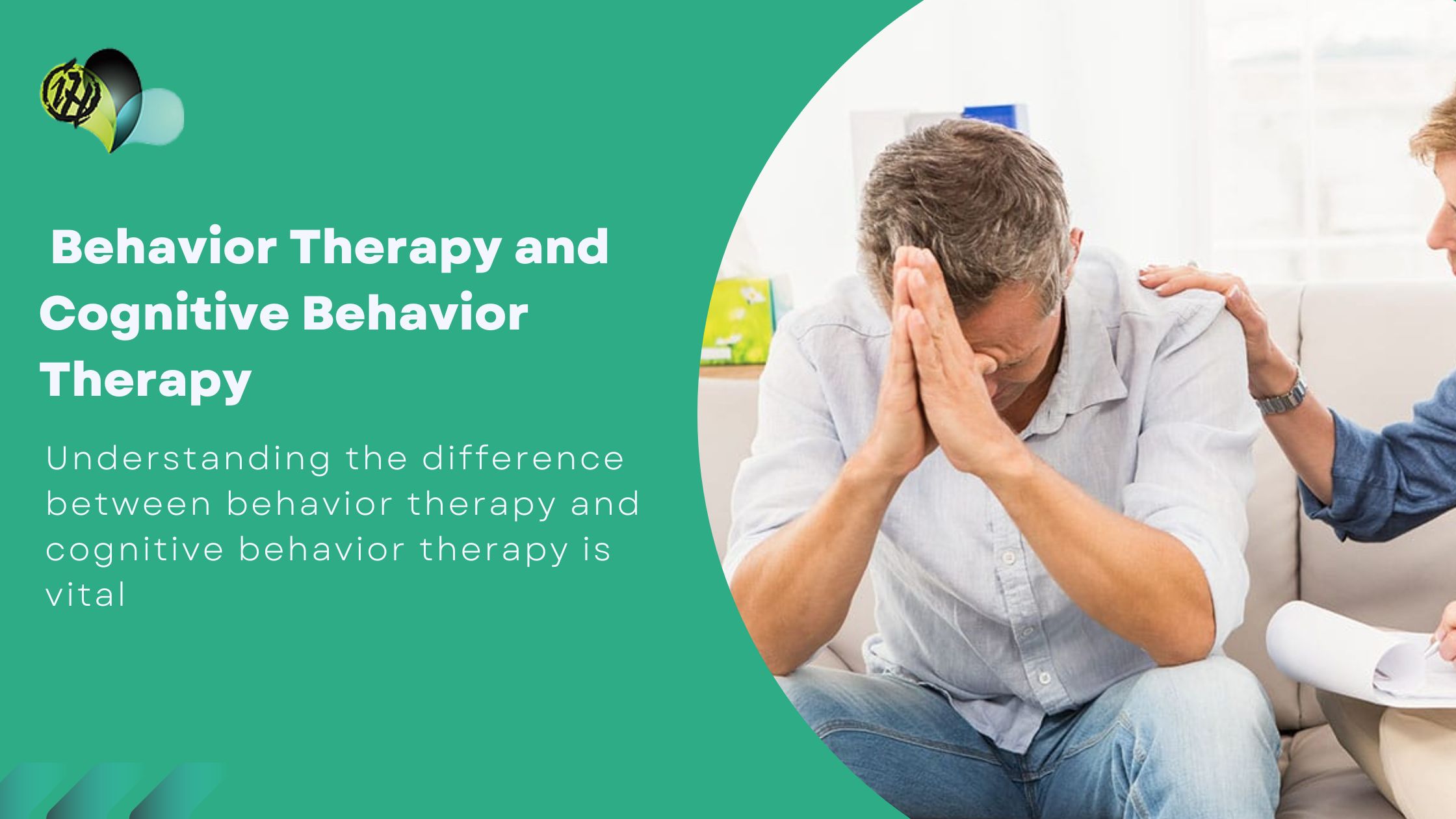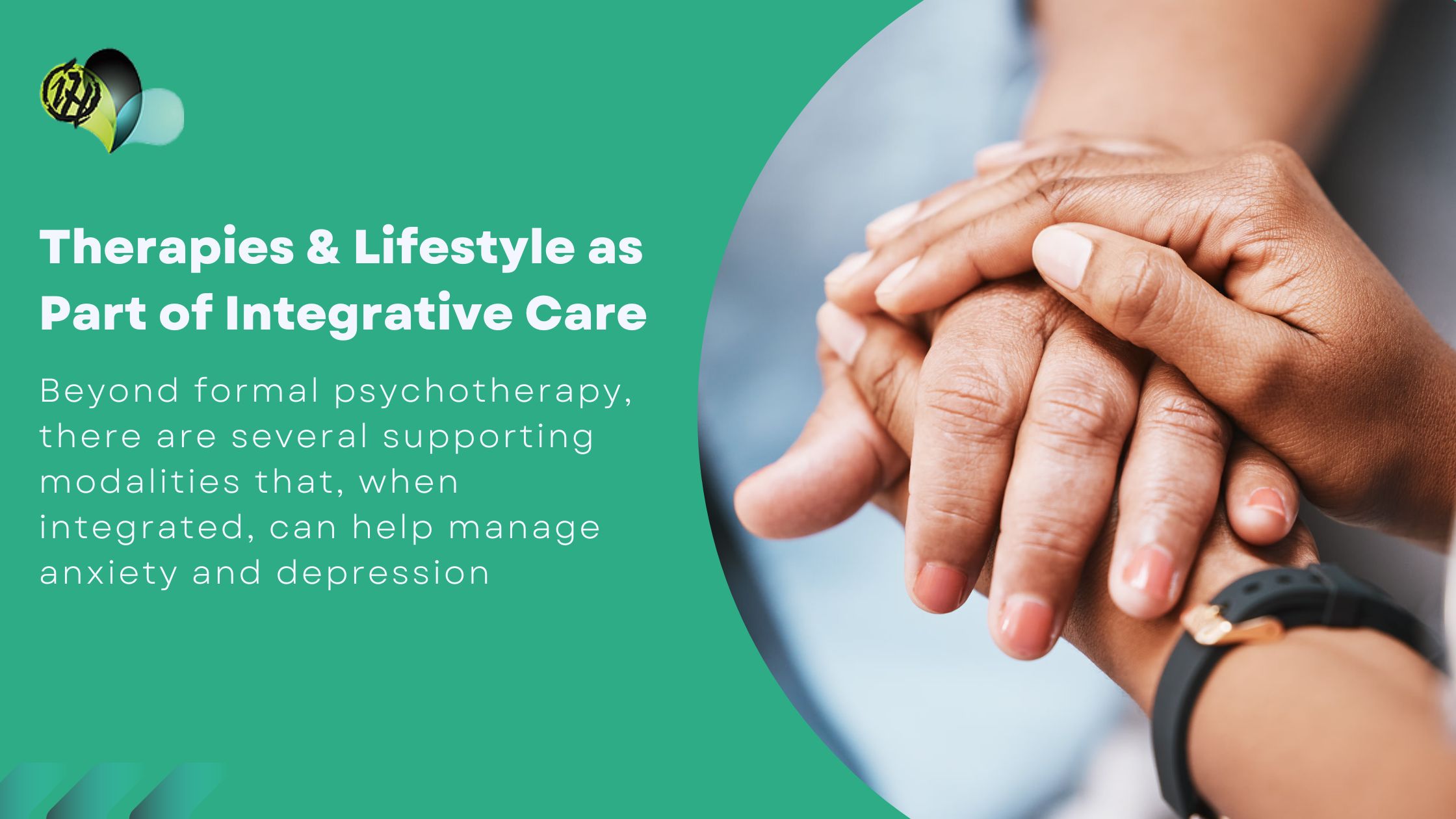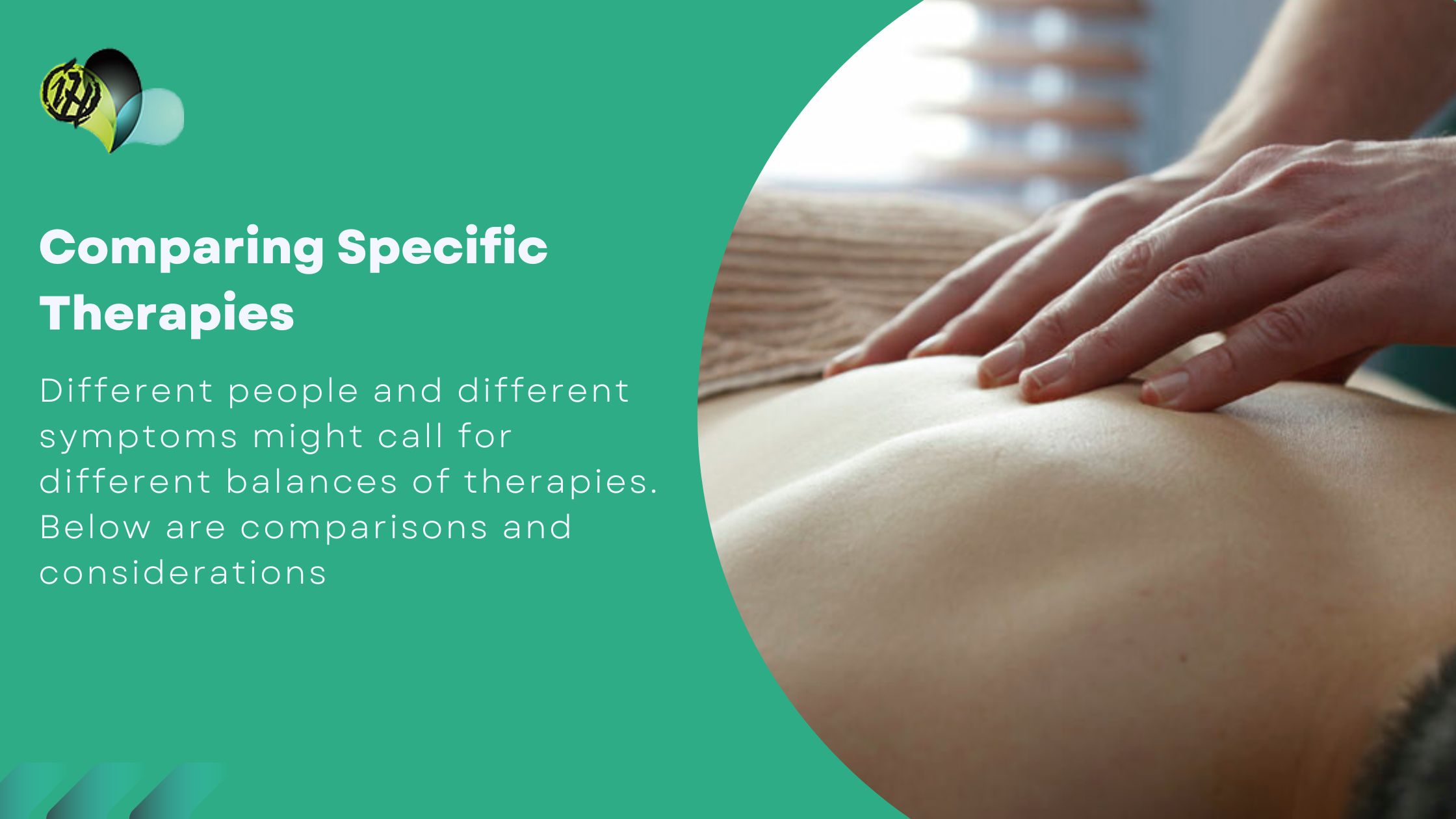Anxiety and Depression Management requires more than a one-size-fits-all approach. In today’s evolving healthcare landscape, people increasingly seek solutions that combine conventional medicine with complementary therapies. This is where integrative care comes in, bringing together physical, emotional, and lifestyle-based practices. To understand this better, we’ll also look at the difference between behavior therapy and cognitive behavior therapy, DBT group therapy, and the integrative medicine multidisciplinary approach to curriculum integration PDF, since these concepts highlight how diverse methods can be integrated for more effective results.
What Is Integrative Health & Why It Matters
Integrative health, sometimes called holistic health, involves using both conventional (allopathic) and complementary or alternative approaches in a coordinated way. Rather than treating symptoms in isolation, integrative strategies consider the whole person: mind, body, spirit, lifestyle, environment. Anxiety and depression don’t exist in a vacuum; physical health, nutrition, social support, stressors, sleep, physical movement, and emotional regulation all play roles.
At Integrative Health Inc., the website says clearly that services include functional medicine, nutrition & weight loss, massage therapy, acupuncture, etc., integrativehealthinc.com. These are not mental-health therapies per se, but in integrative approaches, they support mental well-being by addressing underlying physical and lifestyle contributors to mood and anxiety.
Core Therapeutic Approaches for Anxiety & Depression
In managing anxiety and depression, certain psychotherapeutic interventions are widely used. Below are some of the key ones, with some comparison and distinction, especially touching on the difference between behavior therapy and cognitive behavior therapy, DBT group therapy, and integrative medicine, a multidisciplinary approach to curriculum integration PDF in heading names (as requested):
Difference Between Behavior Therapy and Cognitive Behavior Therapy

Understanding the difference between behavior therapy and cognitive behavior therapy is vital. Behavior therapy (BT) focuses primarily on modifying overt behaviors, actions, habits, and responses through techniques like exposure, systematic desensitization, reinforcement, etc. Cognitive Behavior Therapy (CBT) adds a focus on thoughts and beliefs: how our thinking patterns lead to emotions and behaviors, and how we can change maladaptive thought patterns to change how we feel and act.
- Behavior Therapy might be used, for example, to help someone with anxiety by gradually exposing them to fears or helping with behavioral activation in depression (getting someone to engage in activities even when motivated to stay inactive).
- Cognitive Behavior Therapy includes those behavior‐oriented strategies but also works with cognitive restructuring: identifying distorted or negative thinking, challenging them, and replacing them with more balanced thoughts.
Both are evidence-based and often used together. In integrative approaches, CBT may be supplemented by other therapies (e.g., mindfulness, lifestyle changes, nutritional support) to boost resilience and reduce relapse.
DBT Group Therapy
Dialectical Behavior Therapy (DBT) group therapy is another powerful tool, particularly helpful when emotional regulation is challenging, or when people have co-occurring traits like impulsivity, borderline personality features, or frequent mood swings. DBT emphasizes:
- Mindfulness: being present, aware, observing without judgment.
- Distress tolerance: coping skills for when things are overwhelming.
- Emotion regulation: understanding, labeling, and modifying emotions.
- Interpersonal effectiveness: improving relationships and communication.
In group settings, DBT group therapy offers peer support, shared learning, and practicing skills in a social setting—all of which can be enormously beneficial for anxiety and depression, especially when social isolation or interpersonal stressors are part of the picture.
The Integrative Medicine Framework
Integrative medicine is more than just offering many services; it’s about weaving them together in a way that is personalized and coordinated. At Integrative Health Inc., integrative medicine means having practitioners of different disciplines, functional medicine, naturopathic or natural therapies, nutrition, acupuncture, and physical therapies working alongside mental health or behavioral health-oriented therapies. integrativehealthinc.com
The benefits of integrative medicine include:
- Addressing physical contributors (hormone imbalance, inflammation, nutritional deficiencies, sleep disruption) that often accompany or exacerbate mental health disorders.
- Using complementary approaches that might reduce side effects or medication load.
- Encouraging lifestyle changes, diet, exercise, mindfulness, and rest that support long-term resilience.
- Coordinating care so nothing is duplicated, conflicting, or neglected.
Multidisciplinary Approach to Curriculum Integration PDF
A heading named multidisciplinary approach to curriculum integration PDF may sound academic, but in mental health integrative care, it reflects the idea of integrating multiple disciplines in a coordinated plan (akin to a curriculum) for treatment. Just as a curriculum in school might integrate subjects (math, science, art) into a cohesive learning plan, mental health care can integrate different therapeutic disciplines (psychotherapy, nutritional counseling, movement therapies, stress-reduction practices, sleep hygiene, etc.) into a unified plan for the patient.
Here are elements that might go into such a multidisciplinary plan:
- Assessment by multiple specialists: medical (e.g., hormone, thyroid), nutritional, physical therapy, and psychological.
- Personalized treatment plan: combining psychotherapy (such as behavior therapy, CBT, DBT group therapy) with lifestyle, diet, exercise, and mind-body medicine.
- Follow-up and monitoring: tracking mood, anxiety levels, sleep, physical health, and social support.
- Adjustments and adaptability: if one part isn’t working (e.g., diet, supplement, therapy style), adjustments are made.
Using the metaphor of a curriculum integration PDF means having a documented, structured plan that integrates different disciplines and tracks progress. Though Integrative Health Inc may not publish such a PDF publicly, the concept applies: multidisciplinary team, coordinated care, personalized approach.
Additional Supportive Therapies & Lifestyle as Part of Integrative Care

Beyond formal psychotherapy, there are several supporting modalities that, when integrated, can help manage anxiety and depression:
- Nutrition & functional medicine: key nutrients (omega-3s, B vitamins, magnesium, vitamin D), stabilizing blood sugar, reducing inflammation.
- Sleep hygiene: adequate, quality sleep; managing circadian rhythms; avoiding stimulants; calming bedtime routines.
- Movement & exercise: regular aerobic, strength, yoga, or mind-body movement (e.g., tai chi). Physical therapies offered at Integrative Health Inc. include massage, sports & rehab therapy, which support movement and reduce tension. integrativehealthinc.com
- Mind-body practices: mindfulness meditation, yoga, breathing exercises, biofeedback.
- Acupuncture, massage, and chiropractic alignment: these may reduce physical stress, pain, and tension, which often worsen anxiety or depression. Integrative Health Inc offers acupuncture, massage therapy, chiropractic alignment, etc., integrativehealthinc.com
- Hormonal and metabolic balance: functional medicine and hormone replacement therapies (when appropriate) to correct underlying imbalances. integrativehealthinc.com
- Social support, peer support/groups: group therapy (e.g., DBT group therapy) provides connection, validation, and learning from others.
How Integration Improves Outcomes
Why is an integrative, multidisciplinary approach often superior to single-modality treatment for anxiety and depression? Some reasons:
- Addresses multiple root causes. Anxiety and depression often arise from a mix of neurochemical, psychological, behavioral, lifestyle, social, and environmental factors. Treating only one of these may help, but untreated components may hold back recovery.
- Synergy and reinforcement. For example, improving sleep can make psychotherapy more effective; nutritional improvements may reduce physical fatigue, allowing greater engagement in behavior change.
- Tailoring and personalization. What works for one person might not work for another. An integrative approach allows customizing plans: some may need more nutritional support, others more focus on cognitive therapy, others more body-work, others more social or environmental adjustments.
- Reducing side effects and risks. Using complementary treatments can allow lower doses of medications or reduce adverse effects by supporting physical health.
- Long-term resilience and relapse prevention. Lifestyle changes, stress reduction, and strengthening coping skills (through CBT, DBT group therapy, and behavior therapy) build resilience and reduce chances of relapse over time.
Practical Steps: Building an Integrative Plan
If you or someone you care about is considering an integrative plan for anxiety or depression at Integrative Health Inc., here are the typical steps:
- Comprehensive intake/assessment
- Medical history, physical exam, labs for nutritional markers, hormone levels, thyroid, etc.
- Mental health evaluation: symptoms, severity, history, triggers.
- Lifestyle assessment: diet, sleep, exercise, social environment, stress.
- Goal setting
- What are the realistic goals? Less frequent panic attacks, reduced overall anxiety, improved mood, better sleep, and more energy.
- Selecting therapies
- Psychotherapy: choosing among behavior therapy, CBT, DBT, group therapy, mindfulness, etc.
- Physical/alternative/complementary: acupuncture, massage, chiropractic, nutrition counselling, etc.
- Lifestyle interventions
- Sleep improvement, dietary adjustments, exercise, and stress management.
- Monitoring & adjustment
- Regular check-ins, outcome tracking, and adjusting therapies as needed.
- Support systems
- Peer support, family support, possibly group therapy settings, and integrative medicine practitioners coordinating care.
Barriers & Challenges, and How Integrative Care Helps Overcome Them
Even though integrative care has many benefits, there are challenges:
- Fragmentation of care: when different providers don’t communicate. Integrative Health Inc.’s model of having many services in one center helps ensure coordination. integrativehealthinc.com
- Lack of insurance coverage or awareness: Some integrative treatments may be considered “alternative” and less covered.
- Time & commitment: integrative plans often require more effort, lifestyle changes, frequent sessions, and cooperation across domains.
- Measuring effectiveness: must use good outcome metrics, both subjective (mood, anxiety levels) and objective (sleep data, labs, functional measures).
By using multidisciplinary teams and integrative medicine approaches, many of these barriers can be mitigated: practitioners working together, sharing data, helping clients stay accountable, and making small sustainable changes.
Why Choose Integrative Health Inc. for This Service?
If you’re considering care for anxiety, depression, or overall emotional wellness, here’s why Integrative Health Inc. is a strong choice:
- Comprehensive and diverse services under one roof: From acupuncture, massage therapy, chiropractic alignment, to functional medicine, hormone replacement, nutrition & weight loss, primary care, etc, you have access to many modalities that support mental health. integrativehealthinc.com
- Natural + conventional medicine together: They explicitly state using both natural and conventional medicine. This allows a bridge between evidence-based therapies and complementary tools. integrativehealthinc.com
- Highly qualified practitioners: The team includes specialists in their fields, allowing custom, expert-led treatment plans. integrativehealthinc.com
- Focus on whole-person wellness: Not just symptoms, but lifestyle, nutrition, physical wellness, and emotional regulation are integrative medicine in its fullest sense.
- In-house coordination: Because many services are offered in the same center, coordination of care (between, say, mental health-oriented therapists and physical/acupuncture/nutrition providers) is more seamless.
- Supportive environment: Group therapies (DBT group therapy), patient resources, wellness coaching, and health at home options all create supportive contexts for healing.
Comparing Specific Therapies: What Works Best When

Different people and different symptoms might call for different balances of therapies. Below are comparisons and considerations:
| Therapy | Best For | Advantages | What to Consider |
| Behavior Therapy | When behavior patterns are clearly problematic, such as phobias, avoidance, behavioral activation for depression | Direct, action-oriented, can lead to rapid changes in behavior | Needs motivation; without addressing thought patterns or deeper cognitive distortions, gains may be limited |
| Cognitive Behavior Therapy (CBT) | Anxiety, depression, when negative thoughts feed into mood, for people who can do reflection, journaling, and cognitive restructuring | Strong evidence base; cognitive + behavioral components; helpful with rumination, worry | Requires effort; may feel emotionally challenging; needs a skilled therapist |
| DBT Group Therapy | When emotion regulation, interpersonal issues, self-harm risk, or when people benefit from peer support | Builds skills for handling intense emotions; group setting reduces isolation; structured approach | Commitment required; group dynamics matter; may not be right for everyone individually |
| Acupuncture, Massage, and Physical Therapies | When physical tension, chronic pain, inflammation, or stress is high, the body feels tight or wound up | Helps relieve physical symptoms, lowers stress, may improve sleep; supports mood | Results vary; should be adjuncts rather than replacements for psychological therapies when needed |
| Nutrition / Hormone / Functional Medicine | When there is suspicion of physiological contributors (thyroid issues, vitamin deficiencies, metabolic syndrome, hormonal imbalance) | Can address root physical causes; may enhance energy, reduce fatigue; improve overall bodily function | Labs/tests may be required; changes aren’t instant; needs consistency even in diet, supplementation, lifestyle |
Putting It All Together: Sample Integrative Workflow
Here’s how an integrative plan might unfold in practice at Integrative Health Inc:
- Intake & evaluation: Medical labs, mental health screening, lifestyle assessment.
- Daily & weekly routine plan: Sleep schedule, gentle exercise, meditative practice, nutrition plan.
- Therapy schedule: Perhaps CBT weekly, DBT group therapy sessions twice a month, and behavior therapy techniques between sessions.
- Complementary treatments: Weekly massage or acupuncture to alleviate bodily stress, maybe chiropractic alignment to reduce musculoskeletal strain.
- Regular check-ins: With a therapist, medical or functional medicine provider, or wellness coach. Adjust plan as needed.
It’s this kind of multidisciplinary approach to curriculum integration, a PDF-like structure that ensures nothing is overlooked.
Research & Evidence Base
While the field of integrative mental health is growing, here are some of the evidence:
- Studies show that CBT is among the best-supported therapies for both depression and anxiety.
- DBT has strong evidence in emotional dysregulation, and benefits extend to anxiety and mood disorders in group settings.
- Physical exercise has been shown to improve mood and reduce anxiety; trials show effect sizes similar to medication for mild to moderate depression.
- Nutrition and inflammation: emerging research links gut health, dietary patterns (Mediterranean diet, whole foods) to mood.
- Sleep quality and hormonal balance are increasingly recognized as crucial in both anxiety and depression.
Integrative models that combine these approaches tend to show better long-term outcomes in relapse prevention and quality of life.
Practical Tips for Individuals
If you are reading this and thinking, “How can I apply these integrative strategies?” here are some practical starting points, even before working with a center:
- Track your sleep, diet, exercise, stress, and mood. Awareness is the first step.
- Pick one lifestyle area to improve first: e.g., better sleep hygiene, more movement, or nutrition.
- Explore therapy options: see a licensed therapist who offers CBT (cognitive behavior therapy), behavior therapy, or DBT group therapy.
- Use mind-body practices: simple breathing exercises, meditation, and yoga.
- Seek out providers (like those at Integrative Health Inc.) who offer integrative medicine and coordinate across disciplines.
Conclusion
In the landscape of mental health care, integrative approaches offer a more holistic, personalized, and potentially more effective path for managing anxiety and depression. When you understand the difference between behavior therapy and cognitive behavior therapy, DBT group therapy, and the integrative medicine multidisciplinary approach to curriculum integration PDF in the first line and in the conclusion, the promise of combining therapies, psychological, physical, lifestyle, and complementary, becomes clear. At Integrative Health Inc., the availability of diverse services, expert practitioners, and a model that supports the whole person means you’re getting care that doesn’t just aim for symptom relief, but for greater resilience and wellness. If you or someone you care about is struggling, know that there are paths forward, often many paths woven together, that can lead to healing.

